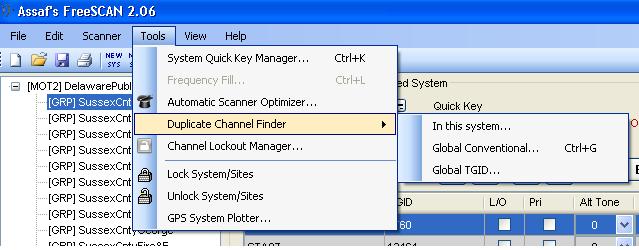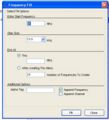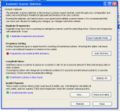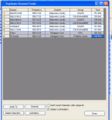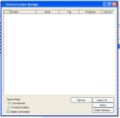Freescan Tools functions
From The RadioReference Wiki
Welcome to the Tools pulldown article.
Contents
System Quick Key Manager
Click on the image to expand
This screen allows you to select which System Quick Keys(SOK) are enabled/disabled by default when you upload data to the scanner.
The SQK Manager displays 100 keys because that's the maximum number of keys available on the the majority of the DMA scanners. However, the other DMA scanners don't have that many - and it's important to know this in order to avoid allocating a SQK that doesn't exist. Here's a quick reference on how many SQKs are available per scanner;
- SC230; 9 SQKs, numbered 1-9
- BC246; 10 SQKs, numbered 0-9
- BR330T; 99 SQKs, numbered 1-99
- BCD396, BCD996, BCT15, BCT346XT, BCT15X, BCD396XT, BCD996XT; 100 SQKs, numbered 0-99
To use this tool;
- Go to Tools/System Quick Key Manager.
- Always start off by hitting the Auto Select button at the bottom to refresh the listing. This insures you are getting the most current configuration
- Float your mouse over to point to one of the checked boxes and look in the blank screen area to the right. If you see your desired system(s), you have defined your quick key correctly. Click on the white box, and a check mark appears - this means that the key is enabled. A white box means the key has not been enabled.
- Note: This tool shifts slightly to a Site Quick Key tool if you are defining individual sites using Multi Site Programming (BCD996T, BCT15 and XT scanners)
If you find that the assignments the manager shows don't match up to what you thought, check these things;
- For trunked systems, make sure that you have a quick key assigned in the Site Setup screen. For conventional systems, look on the Conventional System screen
- Go to the Trunked System Setup screen and look at the Quick Key pulldown in the top middle. For most of the current scanners leave this on the (By Site) setting. For conventional systems, be sure to assign a specific quick key.
Frequency Fill
Use this function to repeat numerous frequencies in a sequence, enabling you to enter frequencies much more quickly.
Automatic Scanner Optimizer
This new feature analyses your scanner's programming, pointing out anything that may be making it scan less efficiently then it could. These things include duplicate frequencies, unsorted frequencies, long hold times,and other settings that are often overlooked but can degrade scanner performance. You can then have it automatically correct everything by clicking on a button.
It will report how well your frequencies are sorted, since sorted frequencies scan faster. Its reported as a number between 0-100%, with 0-50% meaning your frequencies are basically unsorted. After clicking on Auto Sort, this figure will jump to 100%. If you then upload to your scanner, then redownload, it may drop slightly below 100% because of the way systems are sorted. This is normal and won't affect performance.
Duplicate Channel Finder
To use on a site, place the cursor on the desired site in the System View (the white shaded area on the left). The Global setting searches all sites, systems and groups.
In either case, if any duplicate frequencies are found, they are presented in a formatted spreadsheet like screen as shown in the example
The duplicate talkgroup finder works similarly to the duplicate channel finder, but searches all systems for duplicate talkgroup IDs in all lists
Channel Lockout Manager
This function allows you to review any frequency or talkgroups that were locked out, and delete them if desired.
Lock/Unlock Systems/Sites
The lockout, unlock functions are handy for large trunk systems that have many sites. They allow you to change a large number of sites with one click rather then one site at a time. Choosing this function will only affect one system at a time.
GPS System Plotter
- This option will allow you to plot relative transmitter locations and approximate coverage areas. You must have an active internet connection for this function to work. If you cannot view maps in Google, check your configuration for firewall issues
- To use this function, you must have downloaded GPS data using the RR import functions, or added it yourself. If added manually, be sure to check the enable button on the system or group screen (dependent on whether you are using a non-XT or XT scanner, respectively) to allow the function to read the GPS data stored there.
- You may plot more than one system at a time. Just check the system(s) you want to view in the left frame and the map will show all locations where the GPS coordinates have been entered (see the above example) NEW 2.11
Return to the FreeScan User Guide
